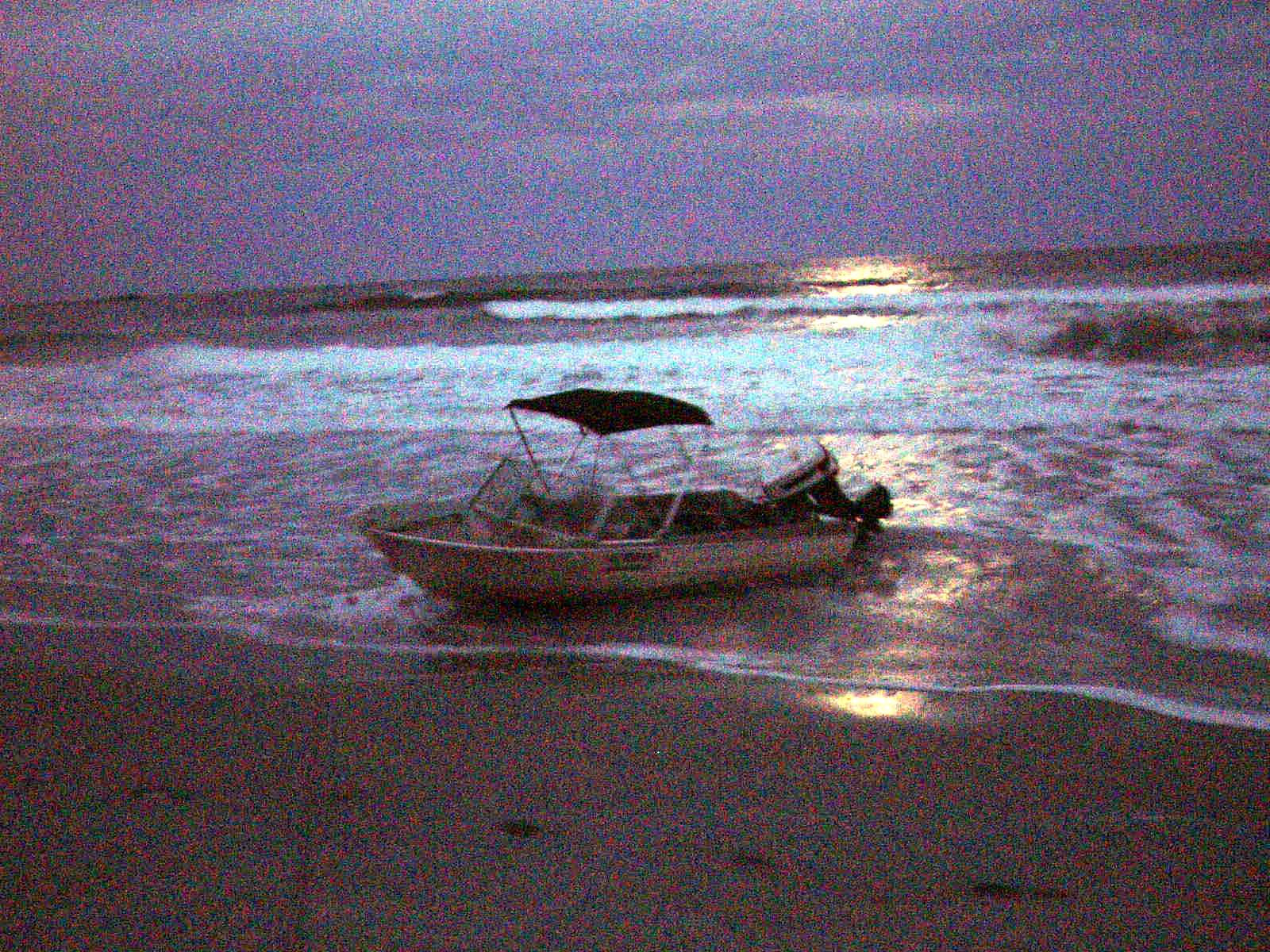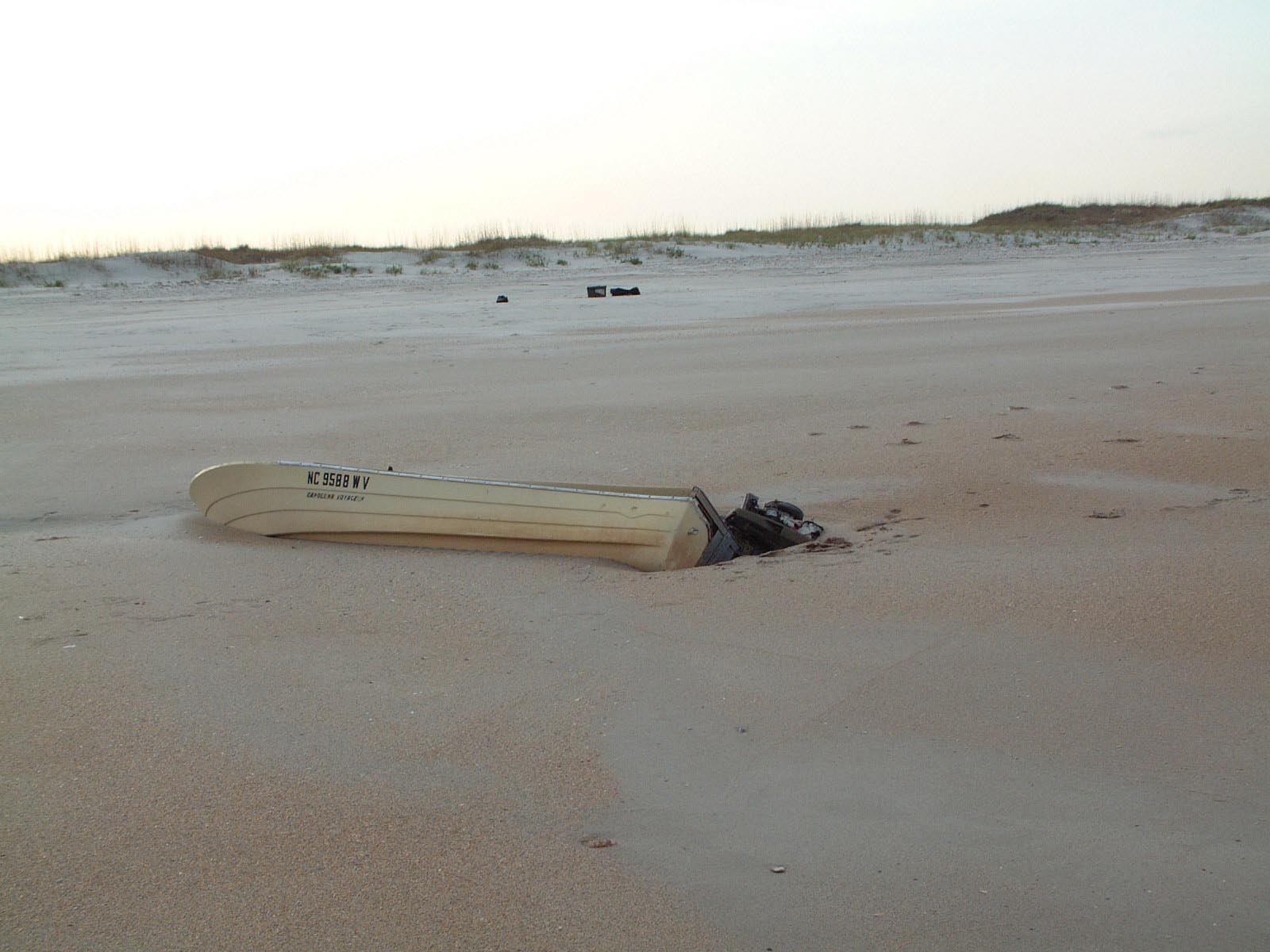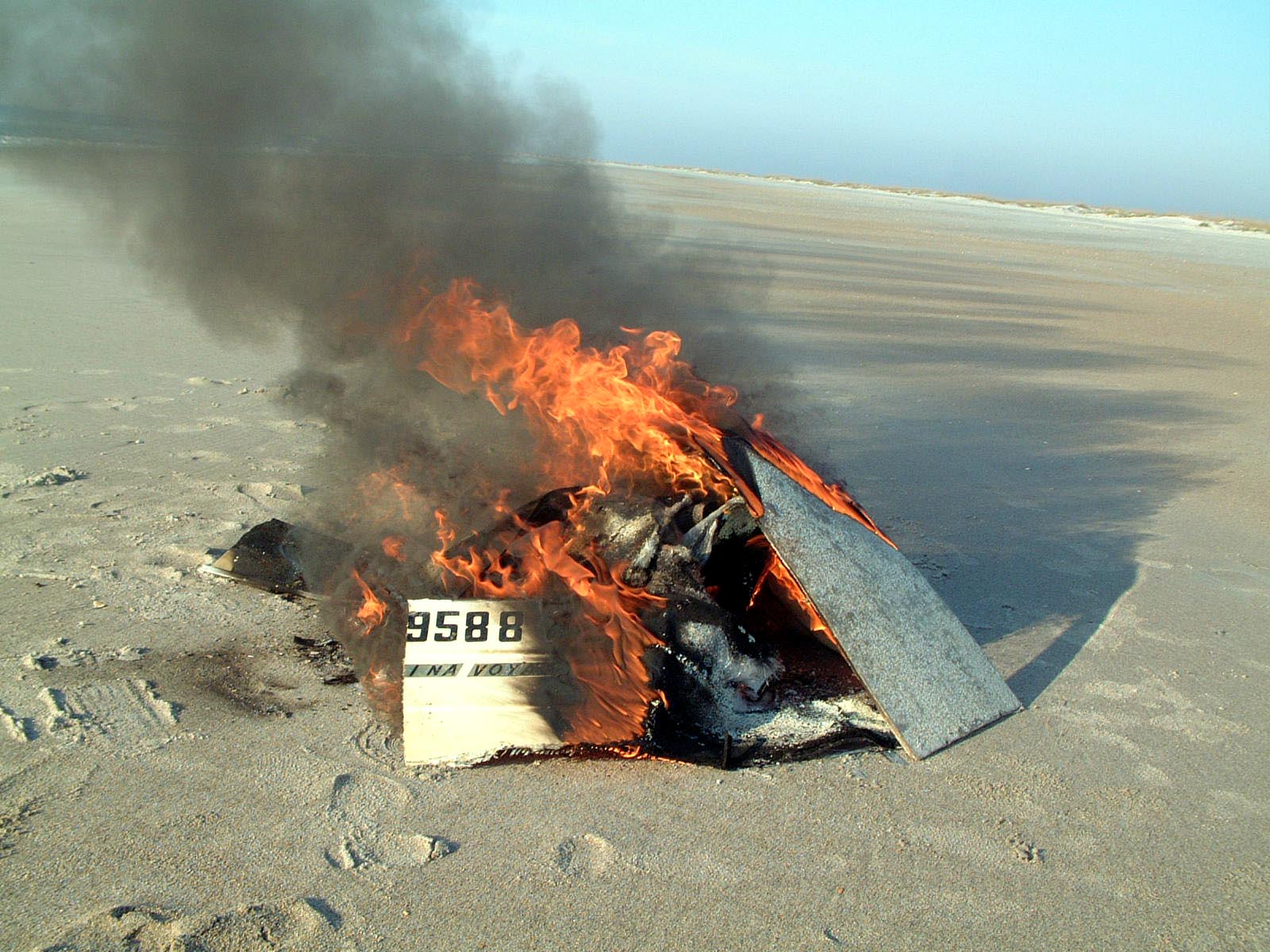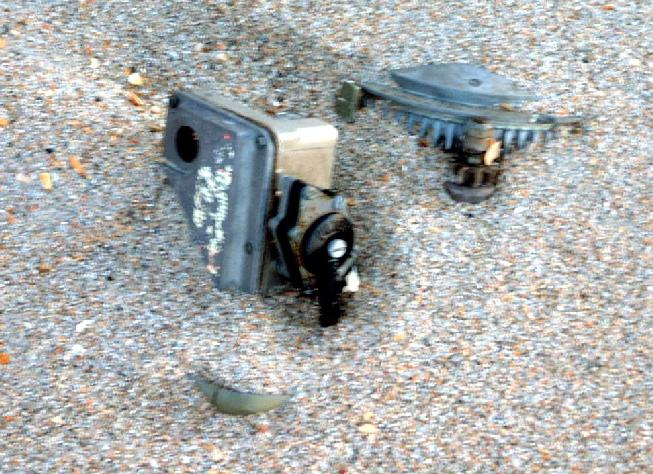
The last photo taken of the Carolina Voyaguer I before her demise.

The last photo taken of the Carolina Voyaguer I before her demise.
This photo shows the Carolina Voyaguer I at high tide on the beach of Masonboro Island ~ 1 km south of the Jetty on the evening of 4/12/06. It was taken by the light of a full moon. Seas are ~2 feet, The rendering above uses photoshop's choice of optimum contrast and brightness. A better impression of what the scene actually looked like can be gained by examining the unaltered photo. She was left for the night on the beach until morning high tide..
On the morning of 4/13/06, at high tide, we re-floated the Carolina Voyaguer, and I drove her out through the surf, and anchored her just beyond the surf. Unfortunately, the 35' anchor rope I used was not long enough for the conditions (~3 ft seas) - although I had plenty of rope on-board. She drug her anchor slowly through the sand over the course of an hour and drifted into the surf zone. She got caught sideways in a steep wave, submerged a gunwale, filled instantly with water, turned over, and sank within a second in ~7 feet of water. An attempt 30 minutes later to locate her or the anchor rope by swimming in the surf was not successful - probably because the effect of the long-shore current was underestimated.
We were watching from the beach where we had camped (and still had our gear). I was putting on a wetsuit to swim out to re-anchor her when it happened. Fortunately, all containers of oil and gas floated off and were immediately recovered. I was able to catch a ride (with surfers) to Wrightsville Beach and connect with a knowledgeable fisherman who drove his boat that afternoon to the Masonboro Sound side of the island for the evacuation of our party and our gear.
Five hours after she sank, I found the Carolina Voyaguer I at low tide in 2 feet of water. She was right-side-up and filling with sand. I did not have a camera. The motor was still in place. Everything else that protruded above the deck was demolished - canopy, windshield, steering wheel, motor cover. The deck was in place, but many of the rivets connecting it to the hull had failed. Our Garmin 12XL GPS receiver (the cerebral cortex of Carolina Voyaguer) was subsequently found on the beach by son Christopher in working order (and is back in service after flushing the battery case with fresh water).
I called the Coast Guard to report her sinking so that the numerous reports of her they received over the next week did not result in a search for survivors.
I returned to the site (by kayak) on the evening of 4/19 at low tide. I found her in the sand at the mid-tide level on the beach (290 yards down the beach from where the road forks before going through the front dunes of Masonboro Island). The deck was buried in the sand adjacent to the hull.

The remains of the Carolina Voyaguer I photographed on 4/19/06 looking landward. Here is
a closeup. Here is the
seaward view.
That evening I cut everything above the sand into pieces with a chainsaw (except the front of the hull which was removed the next morning). Sleep in a tent on the beach. Got up at 5:30 am planning to dig the rest out of the sand at low tide. Found I could only dig 20 inches before running into water. The bolts holding the motor to the boat were removed, but the motor could not be removed because the steering cable was buried in the sand. I burned what I could, hauling out all the metal and glass fiber.

Remains of the Carolina Voyaguer I burning.
I used a pint of diesel fuel in a tray formed from part of the transom to initiate the fire. In this photo (1), you will see both the diesel and the epoxy resin generating substantial amounts of volatile organic contaminates. Here is a photo (3) when the burning is nearly done. My crowbar (used for fire-tending) and avalanche shovel (acquired in 1987 for skiing in the Alps) are apparent. The orange bag contains ~25 lbs of glass fiber that remained after burning and was hauled out on a raft pulled by kayak and deposited (with permission) in a dumpster.

A photo of her motor taken on the morning of 4/20.
I returned to the site on the evening of 5/8/06 by swimming ~1 km across Masonboro Inlet from the south end of Wrightsville Beach. It was cold and windy, but the wind was from the north so the water was calm. I swam to the island at ~9 pm with the tide falling and at ~1.5' above low tide. I knew the area well - having motored through this inlet in each direction aboard the Carolina Voyaguer. There was good visibility with a Moon at 70% illumination through clouds, and lots of light from Wilmington and Wrightsville Beach. I swam across at the landward end of the jetty. This jetty extends outward ~1 km.
There was a ~3 knot seaward current in the center of the inlet (but only in the narrow channel that was easily crossed by swimming perpendicular to it). When I returned at ~10:30 pm there was still a substantial seaward current in the channel. I obtained GPS coordinates (34 deg 10.345 min N lat; 77 deg 49.305 W long) for the position where the Carolina Voyaguer I settled. I was pleased to find that no trace of her was visible.
I again returned to the site on the evening of 9/3/06 by kayak after tropical storm Ernesto came through the area. Still no trace of her.
Here is a link to return to John Mattox's Carolina Voyaguer Project